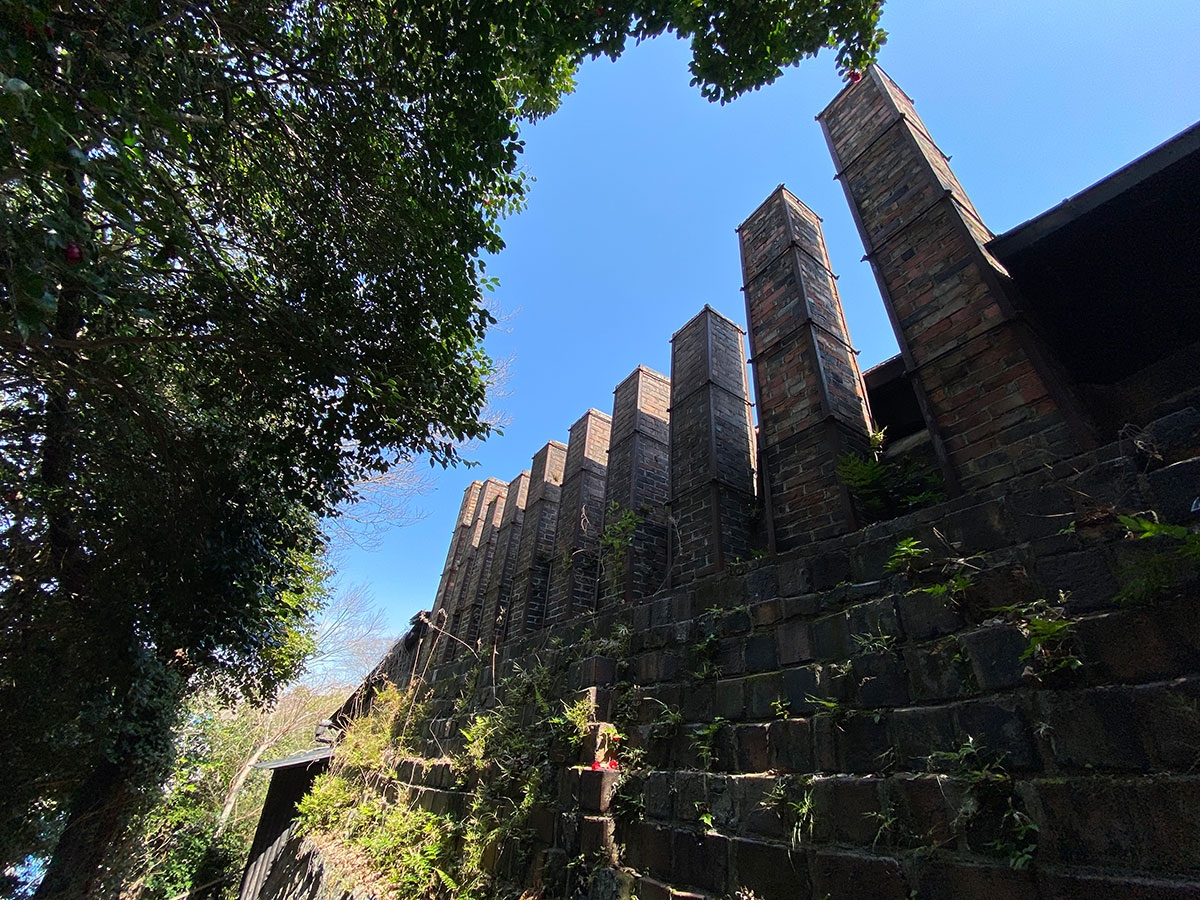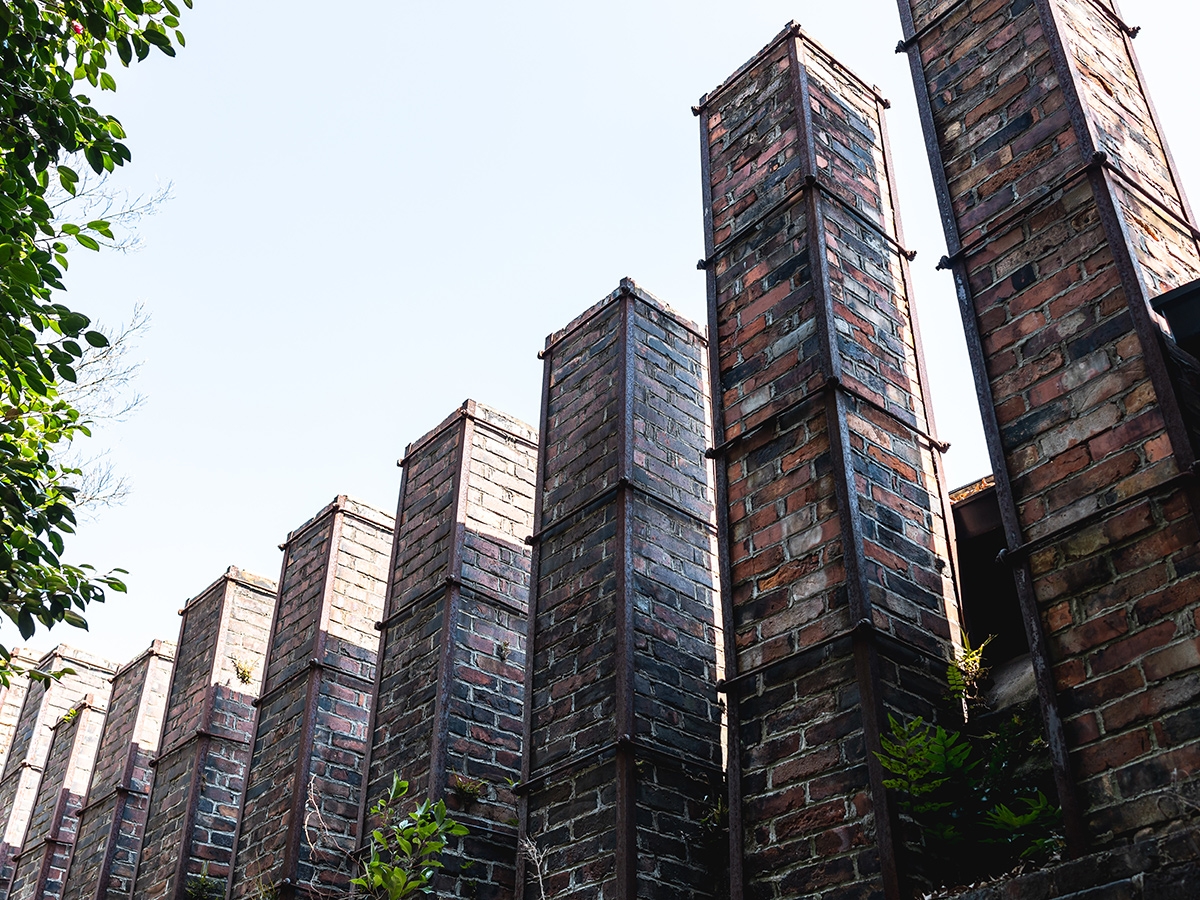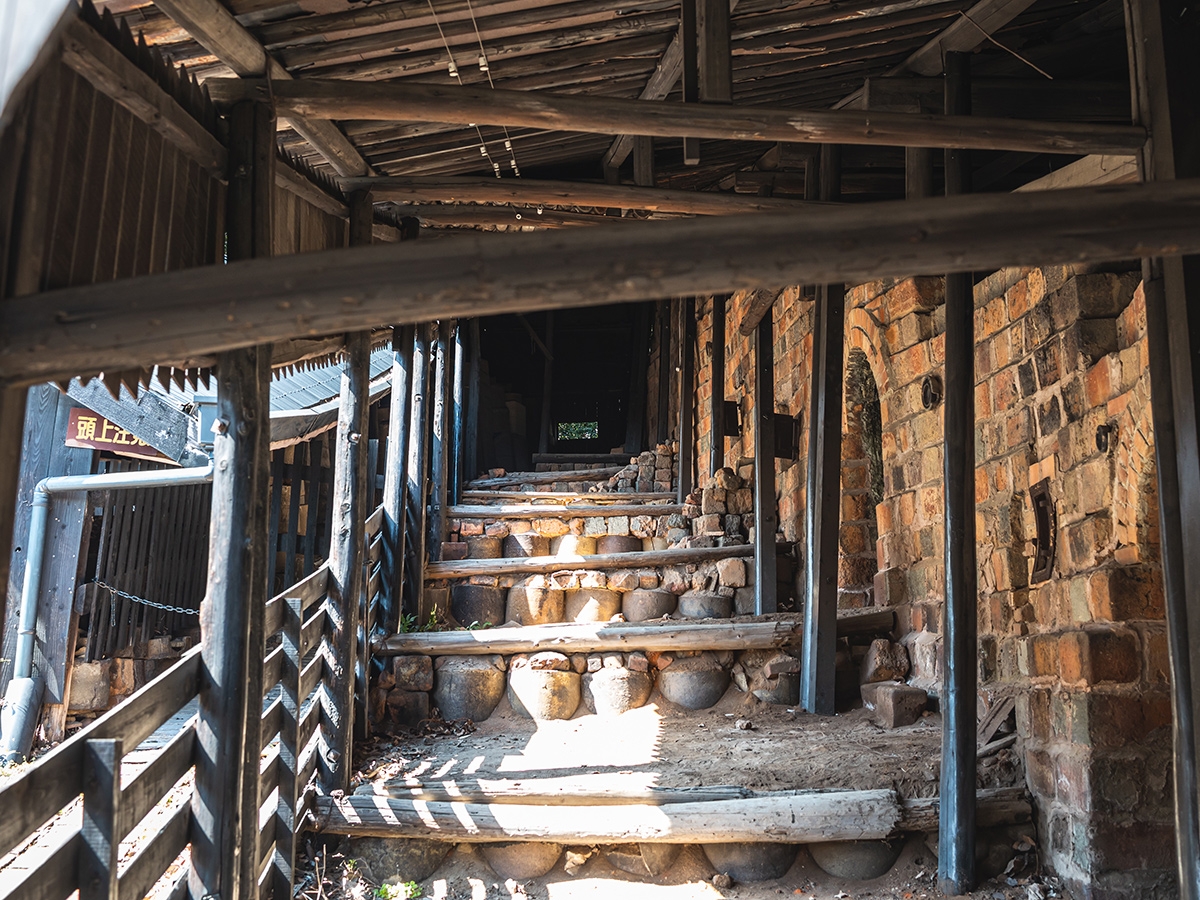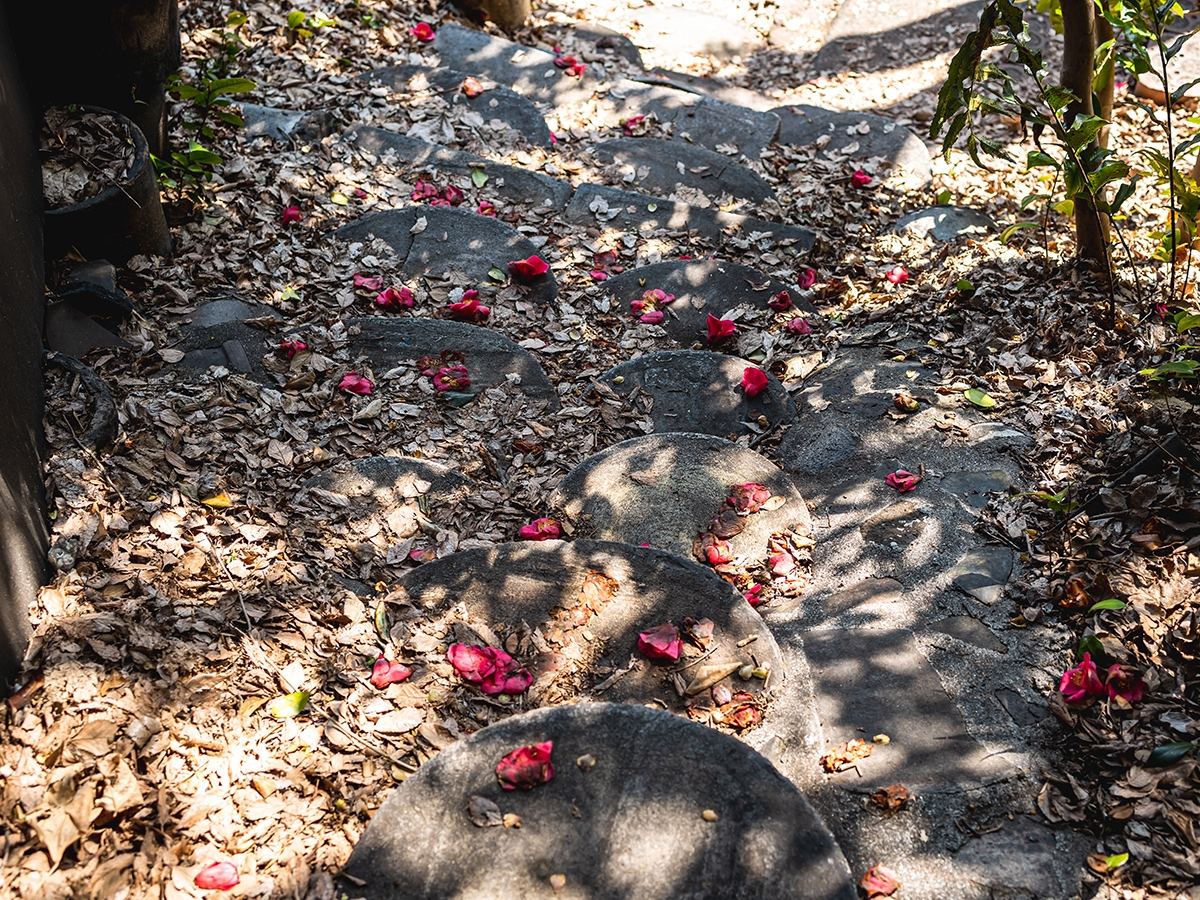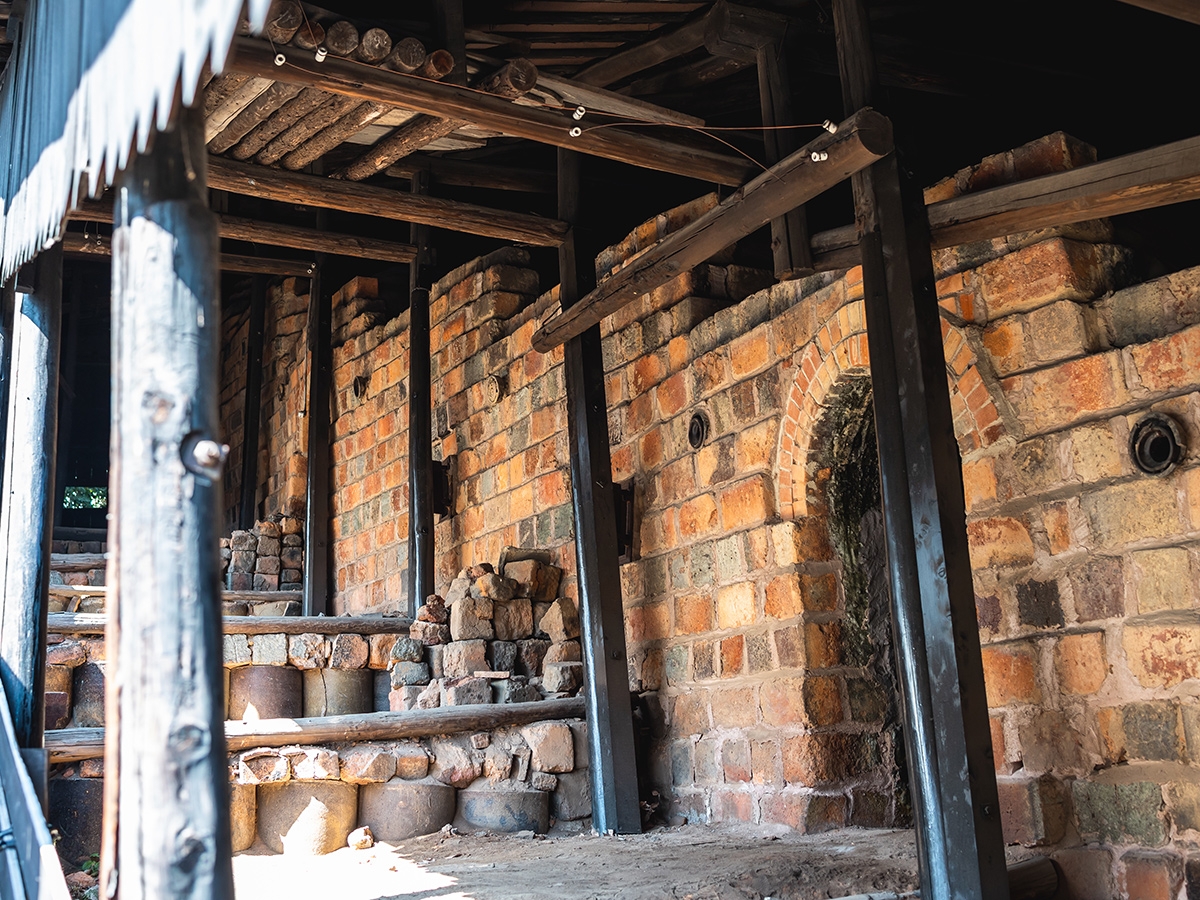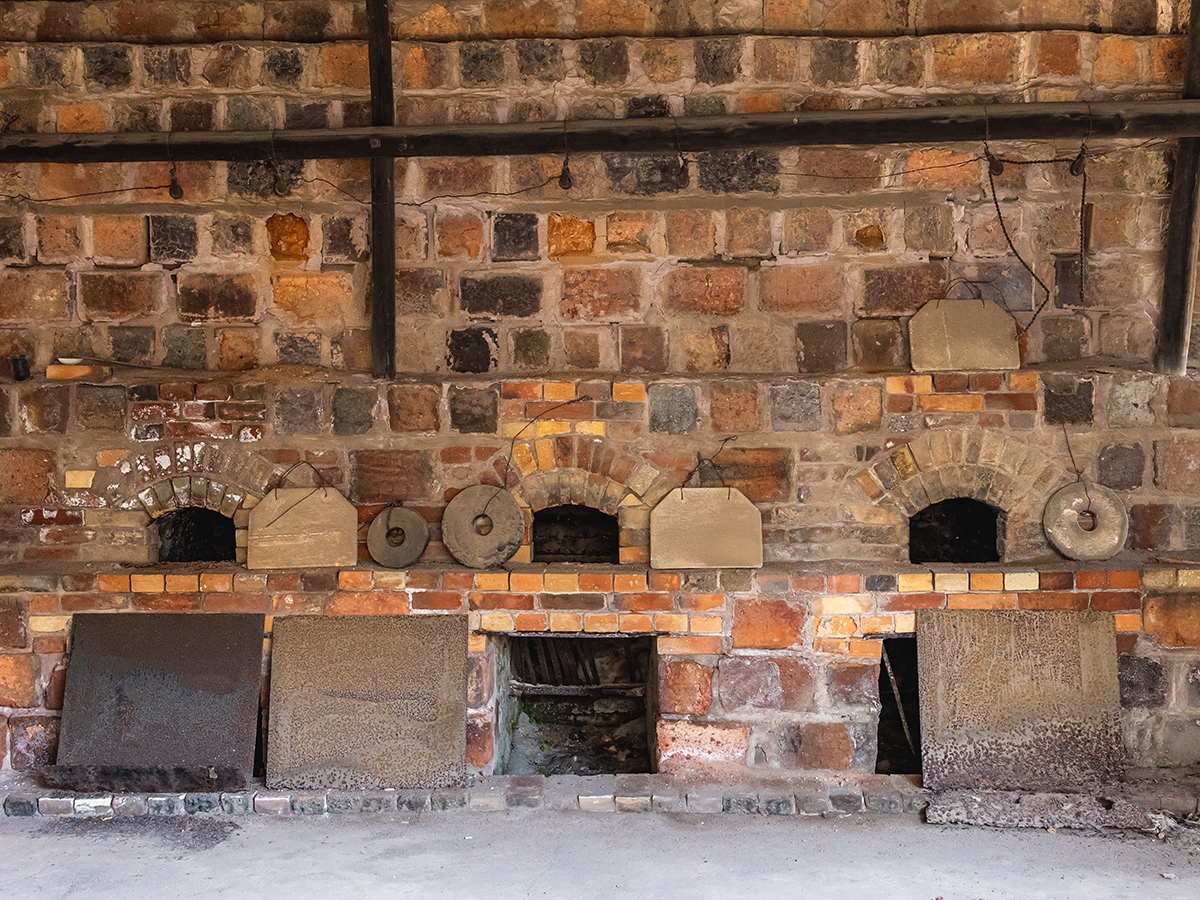Sightseeing spot
Noborigama (Toei Kiln)
Genre:#Tokoname Pottery #History/Culture
Area:#Pottery Footpath
This impressive brick structure sits at an incline of 17 degrees on a hill along Course A on the Pottery Footpath. It is Tokoname’s last “climbing kiln” (noborigama) and one of the largest of its kind in Japan.
Climbing kilns, so called because they are built on a slope, originated in China. They were introduced to Japan via the Korean peninsula in the early seventeenth century and were in use in Tokoname around 1830. Noborigama was in operation from 1887 to 1974.
The kilns were divided into small chambers to facilitate the energy-efficient manufacture of large amounts of pottery, particularly glazed items. The kiln has eight firing chambers and was fueled using wood and coal. Its 10 chimneys of various heights helped maintain an even temperature inside the kiln. Operating it was a collaborative effort involving 33 pottery producers in the neighborhood, who took turns watching the kiln.
Japan experienced a rapid modernization from the mid-nineteenth century, and by the 1910s, some 60 climbing kilns were in operation in Tokoname. The kilns produced tiles and ceramic pipes for use nationwide. In the mid-twentieth century, technological improvements and stricter environmental regulations led to the cessation of production at Noborigama in 1974.
Noborigama was designated a National Important Tangible Folk Cultural Property in 1982, ensuring the preservation of a part of Tokoname’s heritage.
Basic information
| Name | Noborigama (Toei Kiln) |
|---|---|
| Address | 6-208 Sakaemachi |
| Prices | Admission: Free |


